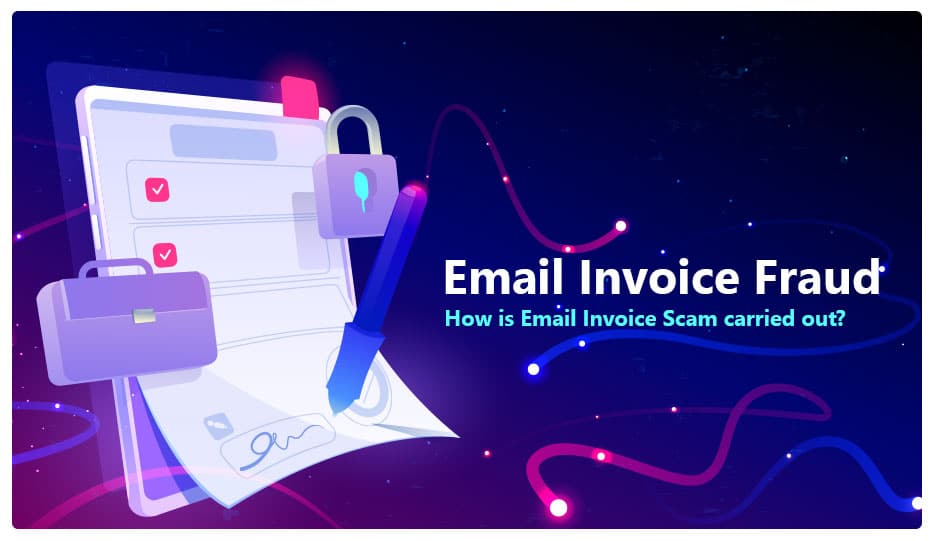
Business owners are now growing increasingly aware of cyber security concerns hanging over their heads like a dark cloud. That is why most business owners tend to automated security solutions. They can then focus on what matters most to them: running their business. One such concern that is causing monetary losses in the millions is an email invoice fraud.
In this blog, we will focus on email invoice scams, their nature, and prevention techniques.
How Is an Email Invoice Fraud carried out?
An invoice fraud occurs when fraudsters alter a legitimate supplier’s invoice to redirect funds to their own bank account, or send their own duplicate invoice entirely. The buyer, used to invoices from the particular supplier, follows the instructions as per the invoice and releases the payment. It is only when the supplier asks for payment confirmation — if even that — that the email scam comes to surface. If the supplier has taken timely action, the organization can revert the fraud by freezing the fraudulent transaction. Otherwise, the amount is lost beyond retrieval.

An email invoice scam takes help from allied cyber-attacks like email spoofing or business email compromise (BEC). In certain cases, the fraudster will even spoof the email of someone within the organization, and leave instructions to employees in the accounting department to release funds for an authentic-looking invoice.
The Nature of an Email Invoice Fraud
Email invoice fraud cases are notably different from other cyber threats. They require careful planning and social engineering. Unlike most cyber threats, this type of email scam does not rely on malicious payload. The success of an email invoice scam depends on whether a fraudster can get away with impersonating a supplier or a decision maker within your own organization.
For this, along with email address or invoice manipulation, the criminal also needs the aid of psychological manipulation. To achieve this, fraudsters set their plans in motion well before they intend to execute the actual scam. A fraudster monitors and observes the billing patterns of an organization, the verbiage the people involved in invoicing typically use, and try to find out patterns to the supplier’s invoice transmissions.
At crucial timing, the scammer will inject into the email communication and send out the false invoice. Other times, a scammer will wait for a delay between sending out the invoice and its payment, and then send an email giving instructions for the payment to be redirected to another account. He or she will try to nail down the wording of the email so as to match it exactly with general communication. The scammer will also spoof an email address carefully so a casual eye will not recognize it.
Seems difficult to combat? What can you do to protect yourself against such a unique attack? Let’s see.
5 Steps for Email Invoice Fraud Prevention
- Have a streamlined process for verifying and releasing payment. Having multiple sign-offs can help you catch an invoice fraud attempt.
- Double-check with your supplier if you receive an email requesting you to redirect funds to another account.
- If dealing on a phone call, ask them whether you can call back on a known, trusted number. This will throw off an impersonator who’s moved past email to telephonic scamming.
- Supplier lists are most likely protected under NDAs (Non-Disclosure Agreements). However, as a means to boost the trust factor of their business’s website, business owners sometimes display supplier testimonials and client lists up on their website. This makes it very easy for a fraudster to know which suppliers you are working with. As far as possible, avoid advertising your supplier lists.
- This is up to the discretion of the supplier, but if possible, try setting up a Single Point of Contact (SPOC) with each of your supplier. With this, a sudden change in the language of your received emails or an email from another email address will come as a surprise to you, thus alerting you instantly.
Write to us for further help and security assistance.